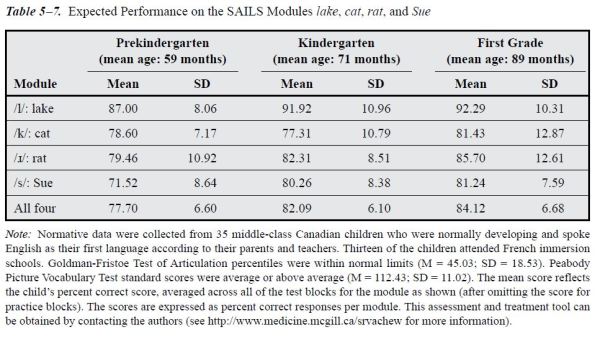I rather like this new paper by Treiman et al (2019) in Scientific Studies of Reading on “The unique role of spelling in the prediction of later literacy performance” or in actual fact word reading performance because that is the only outcome measure in this study, albeit measured longitudinally between kindergarten and ninth grade and in 970 children. The upshot is that early spelling predicts unique variance in ongoing word reading skills after taking into account early phonological awareness, vocabulary and letter knowledge skills. Presumably spelling captures other important aspects of literacy knowledge such as orthographic knowledge and also I imagine morphological skills.
I have been interested in spelling for a while now because it is the aspect of literacy most likely to be impaired in children who have speech sound disorders. Furthermore, the Quebec government (that funded the research that I will describe here) had been concerned by falling literacy test scores across the province’s schools and the scores for orthography (a combination of spelling and morphology) had been particularly low. Specifically the percentage of children passing the province wide literacy test with respect to orthography fell from 87% in the year 2000 to 77% in 2005 whereas the proportion of children scoring in the unsatisfactory range increased from 5% to 11% over the same period.
Therefore, a group of us set out to develop a tool to predict spelling difficulties in French-speaking children in Quebec, the result being PHOPHLO (Prédiction des Habiletés Orthographiques Par des Habiletés Langage Oral). Specifically, we hypothesized that spelling difficulties at the end of the first and third grades could be predicted by examining oral language skills at the end of kindergarten/beginning of first grade using an ipad based screen of speech perception, speech production, rime awareness and morphology productions skills (more about the test at www.dialspeech.com). The test was found to accord well with teacher predictions of spelling difficulties and objective measures of spelling at the end of first grade:
In a larger study we documented specificity and sensitivity of 93% and 71% respectively for the prediction of spelling at the end of second grade:
We are especially proud of this latter paper because it won the editor’s paper from CJSLPA. And I am especially proud of Alexandre Herbay because he created such beautiful software with only 6 months of funding from MITACS.
The reason for this blog is that it was only after publishing these papers that it occurred to me to look for gender effects in the data! I don’t know why because the province wide literacy test results had been flagging issues with gender differences in literacy performance all along. There has been a significant gap favouring the girls in literacy performance across all scoring criteria since 2000: even after improving the success rate considerably since 2005, the gender gap persists. For example, in 2010 88.7% of children passed orthography but the rate for girls was 90.1% versus the rate for boys at 81.3%. With this concern about the performance of boys looming large at the provincial level, it finally occurred to me to wonder if our PHOPHLO screener would be sensitive to gender differences.
The answer to my question is interesting on two accounts. First there turns out to be a big gender effect in spelling outcomes, as follows: girls who passed the PHOPHLO screener obtained a second grade spelling test score of 51 which compares to 40 for the girls who failed the PHOPHLO screener; boys who passed the PHOPHLO screener achieved a second grade spelling test score of 47 which compares to a spelling test score of 31 for boys who failed the PHOPHLO. This means that PHOPHLO predicted PHOPHLO performance for both boys and girls (main effect of PHOPHLO, F(1,74) = 26.71, p < .0001) but boys obtained lower scores than girls regardless of their PHOPHLO performance (main effect of gender, F(1,74) = 6.61, p = .012) with no significant interaction.
The second interesting finding however was that there was no gender difference in PHOPHLO scores: as measured by this screener the children had equivalent language skills at school entry. There are three possible explanations. The screener is only a screener and therefore it is quite likely that there are differences in language performance between the boys and girls at school entry that are uncovered by the PHOPHLO screener, given that boys and girls do have a different trajectory for early language development, although typically only for language production and it is often reported that they have caught up by school age. Another possibility is that these early language differences cause a difference in executive functions or temperament for boys that impacts their ability to learn literacy skills in school. The third possibility is that boys are treated differently in school due to gendered social expectations for behavior, interests and social identity that discourage literacy related activities for boys. In any case, this finding raises questions about what happens to boys at school between kindergarten and first grade. Our research is currently concerned with this question and I will share those results during my keynote address at the upcoming 2019 joint conference of Speech Pathology Australia and the New Zealand Speech Therapists Association in Brisbane.



